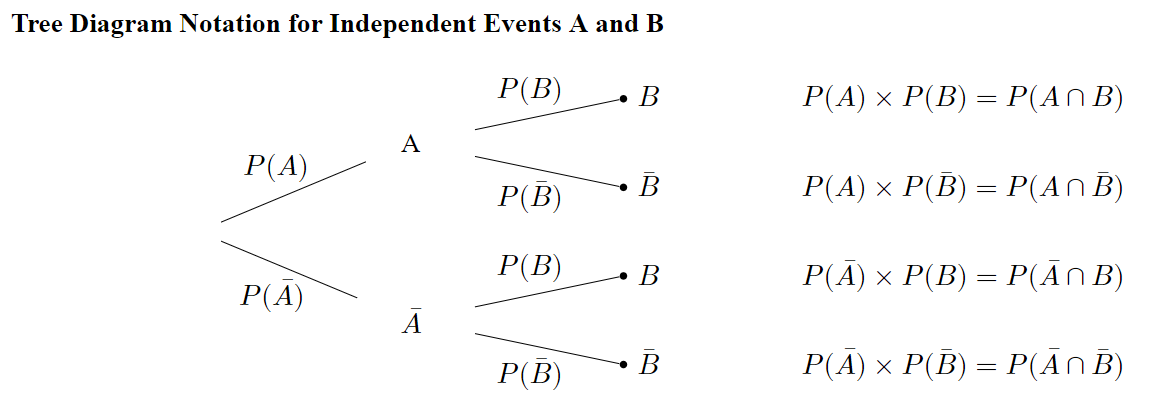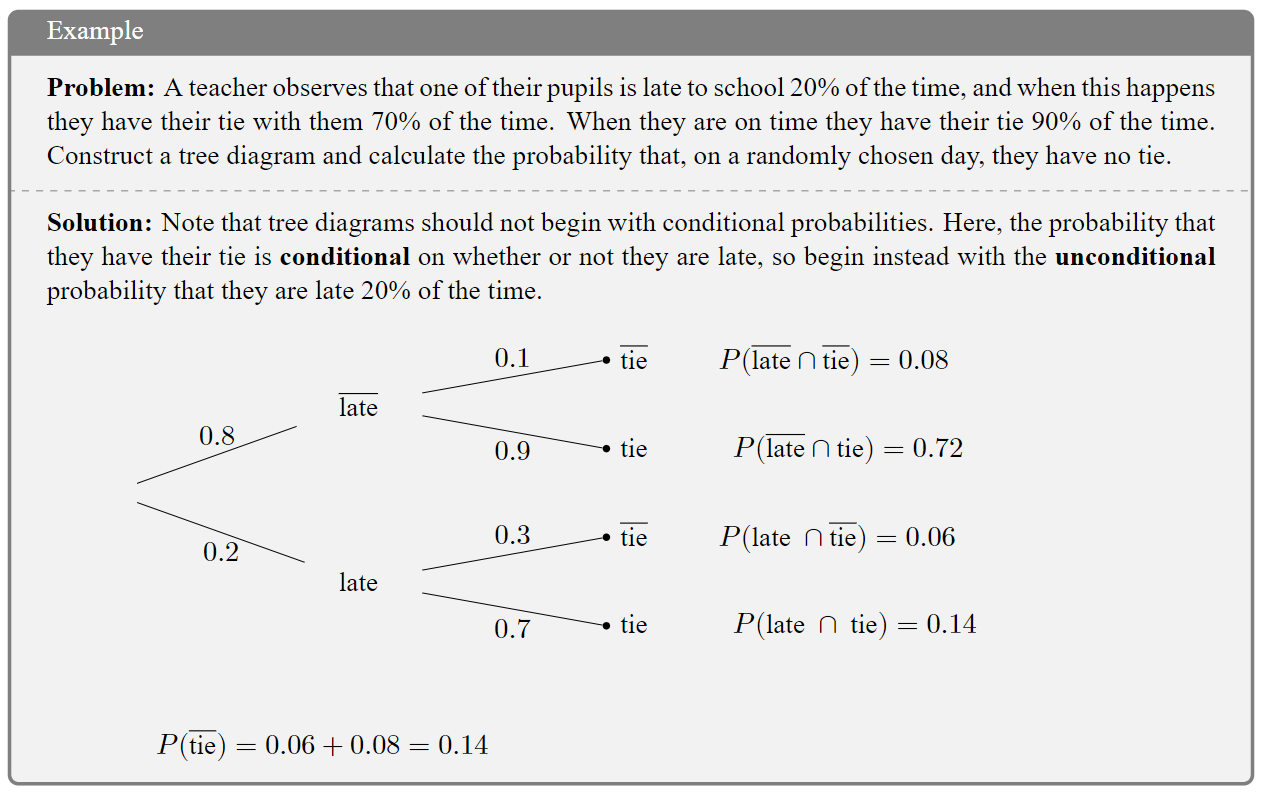1.9 Tree Diagrams and Probability Notation
On pages 8 and 9 tree diagrams were used to determine the probabilities of the intersections of events by multiplying along branches. Where events on the first stage of a diagram had no impact on the probabilities of events on the second stage this was because the events were independent. Where the probabilities on the second stage changes based on previous events, this was becuase the events were not independent.
Concepts such as independent, or not independent and notation for conditional probabilities and intersections can now be related to tree diagrams, as shown in below.


The law of total probability says that the probability of an event \(A\), when its conditional probabilities given mutually exclusive and exhaustive events \(B_i\) are known, along with the probabilities of each of \(B_i\), is given by:
\[P(A)=P(B_1)\times P(A|B_1)+P(B_2)\times P(A|B_2)+P(B_3)\times P(A|B_3)+...\]
This can be expressed using Sigma Notation, using the Greek letter \(\Sigma\) (“Sigma”), representing a sum. As an example, if there are 4 events upon which \(A\) is conditional (\(B_1,B_2,B_3,B_4\)) then the total probability could be expressed as:
\[P(A)=\sum_{i=1}^{4}P(B_i)\times P(A|B_i)\]
Sigma notation is encountered often when examining the underlying mathematics of statistics. However, when all possible intersections are known, as is typically the case with tree diagrams, the total probability of an event \(A\) can be seen more simply as the sum of all intersections in which \(\mathbf{A}\) is true.
